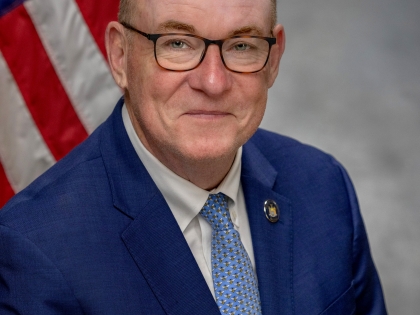
Hinchey, Rolison Lead Bipartisan Letter Calling for EPA Action on Hudson River PCB Clean-Up
March 31, 2025
Senators Michelle Hinchey and Rob Rolison sent a bipartisan letter, signed by 28 of their State Senate colleagues, to EPA Administrator Lee Zeldin and Regional Administrator Mike Martucci, urging the EPA to declare that further PCB clean-up in the upper Hudson River is necessary. They’ve requested the EPA declare a ‘not protective’ determination as part of its current five-year report, including committing to a clear timeline for a full Remedial Investigation and Feasibility Study. The study would assess the full extent of PCB contamination in the lower Hudson's sediments, water, and wildlife—a portion that has been severely overlooked.
Over the course of more than 30 years, General Electric (GE) discharged more than 1.3 million pounds of Polychlorinated Biphenyls (PCBs) into the Hudson River, transforming a 200-mile stretch of the river into one of the largest Superfund sites in the nation. GE’s mandated cleanup of its pollution ended in 2015, but data consistently shows current measures do not sufficiently protect human health and the environment, demonstrating the urgency of continued remediation.
Senator Michelle Hinchey said, “General Electric dumped toxic chemicals into our Hudson River for decades, and it’s an injustice of epic proportions that this billion-dollar corporation is still to this day allowed to sidestep responsibility. Full remediation falls squarely on the polluter, not the Hudson Valley and not our Environmental Justice communities. The EPA must mandate General Electric to immediately resume clean-up and restore the health of our Hudson River.”
Senator Rob Rolison said, “The Hudson River is the backbone of our region’s economy and environment, yet PCB contamination continues to jeopardize public health, waterfront development, and economic opportunities for our communities along the river. This isn’t just about cleanup, it’s about restoring a river that the people and businesses that rely on the river can live, work, and play in safely and every year of inaction holds back economic growth, public health, and recreational access. The EPA must step up now to ensure a full cleanup, so the Hudson can be a thriving resource for all who depend on it.”
“The scientific evidence is clear, the Hudson River PCB cleanup is failing to protect public health and the environment. Every day of inaction allows these toxic chemicals to continue harming our communities, our waters, our wildlife, and our economy,” said Tracy Brown, President of Riverkeeper. “The Hudson is a vital resource for millions of New Yorkers, yet lingering PCB 'forever chemical’ contamination continues to limit its potential. The EPA must take stronger action to address PCB pollution across the entire Superfund Site, including the Lower Hudson River and the Upper Hudson River floodplains. We stand with our state legislators in calling on the EPA to take immediate and decisive action to hold polluters accountable and restore the Hudson to a truly healthy and thriving state.”
“Scenic Hudson thanks Senators Hinchey and Rolison for their leadership in requesting that EPA take long overdue actions at the Hudson River Superfund Site. EPA has the data it needs to acknowledge that the cleanup has failed to meet the fundamental Superfund standard: ‘protective of human health and the environment,’” said Scenic Hudson President Ned Sullivan. "We ask EPA to begin work on the addendum to the Third Five-Year Review immediately, analyze the data for 2023 and 2024, and release its decision by the end of this calendar year. At this critical juncture, EPA leadership has an important opportunity to provide long-overdue relief to the millions of people and the many businesses that rely on the Hudson River.”